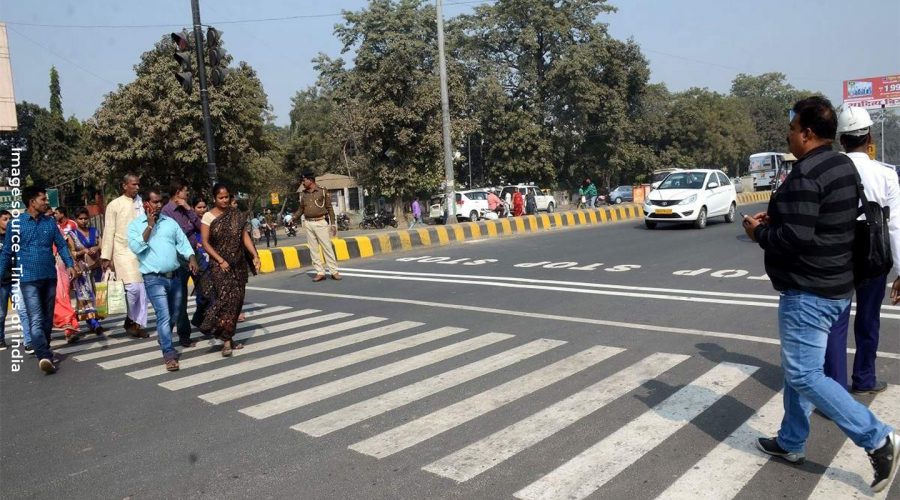Share this
The Union administration told Parliament that the majority of pedestrian deaths in the country occur because people do not obey the rules for walking and crossing roads during traffic, prompting severe criticism from experts who questioned the Centre’s lack of suitable walking infrastructure.
“Generally, such deaths occur due to pedestrians not following norms laid down for walking along roads or trying to crossroads during traffic. Accidents also occur due to over-speeding vehicles,” Union road transport and highways minister Nitin Gadkari told the Rajya Sabha on Wednesday, in a written reply to a question by Bharatiya Janata Party (BJP) MP from Uttar Pradesh, Brij Lal.
The ministry also placed on record that the government has, so far, not conducted any study to analyse the causes of pedestrian deaths in the country. “To prevent road accidents and save lives, the Motor Vehicle (Amendment) Act, 2019 passed by Parliament, focuses on road safety and includes, inter-alia, hike in penalties for traffic violations, electronic monitoring of the same, enhanced penalties for juvenile driving, computerisation/automation of vehicle fitness and driving, tests, recall of defective vehicles, streamlining the third-party insurance and payment of increased compensation for hit and run cases etc. The Amendment has strengthened the law to improve the road safety scenario and reduce the loss of lives. However, no study on why pedestrian deaths happen is available or has been conducted,” the reply stated.
According to data presented to the Rajya Sabha by the Centre, there were 23,483 pedestrian deaths due to traffic accidents in 2020. Despite the Covid-19 outbreak and subsequent shutdown, the number of pedestrian deaths in 2018 was down somewhat from the previous year, when 25,858 pedestrians were killed in traffic accidents. There were 22,656 pedestrian deaths reported across the country in 2018.
According to government data, 131,714 persons were killed in road accidents across the country in the calendar year 2020, down from 151,113 in 2019.
Kamal Soi, a member of the National Road Safety Council, reacted angrily to the Centre’s response on pedestrian deaths, saying the government’s approach to urban and safe transportation was incorrect.
“This is a ridiculous and absurd answer and I, despite being a member of the government of India’s road safety council, do not endorse this. We have not created the necessary infrastructure for pedestrians and still we have the audacity to blame them for their own deaths. It is the sole responsibility of all the agencies to create and ensure adequate infrastructure for safe pedestrian movement. The world is moving towards walking and cycling as a last-mile connectivity mode and here we have lawmakers having such a fundamentally wrong approach to policies,” Soi added.
Shreya Gadepalli, the managing trustee at Urban Works Institute, said designing cities for people rather than cars could ensure that “streets are full of life, not deaths”.
“Road crashes have become so common that they hardly evoke any reaction in us anymore. There is a disconnect in the way we design our streets and the way we want our drivers to behave. You may have often come across road signs that read: “speed thrills but kills”. But if we want people to drive slower, why do we design streets as racing tracks? Why do we have highways within cities that become barriers for people to cross? Why is an attempt to even slightly widen footpaths seen as an encroachment on space that “rightfully” belongs to motorists,” she added.
Kamal Soi, a member of the National Road Safety Council, reacted angrily to the Centre’s response on pedestrian deaths, saying the government’s approach to urban and safe transportation was incorrect.
According to Piyush Tewari, founder and CEO of SaveLIFE Foundation, around 72,000 pedestrians have died on Indian roadways in the last three years, indicating a hazardous trend. “States must promptly implement the Motor Vehicles Amendment Act, 2019, and in particular, Section 138(1A) of the MVAA 2019, which deals with pedestrian safety, in order to make roads safer for pedestrians.” Because pedestrians have the right of way on roadways, Tewari noted, “there must be mandatory walking infrastructure for pedestrians, which must be implemented at the level of road design.”

